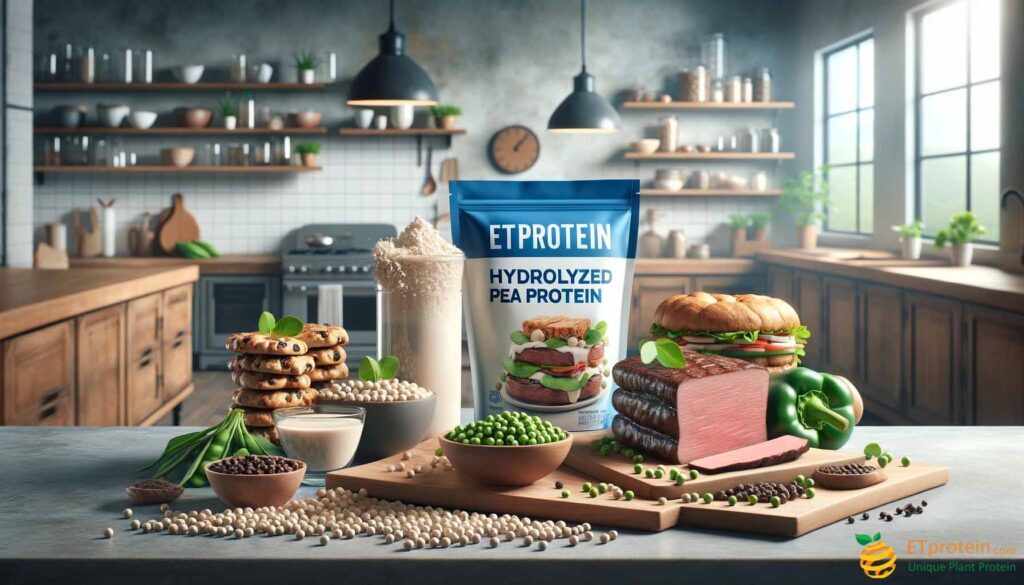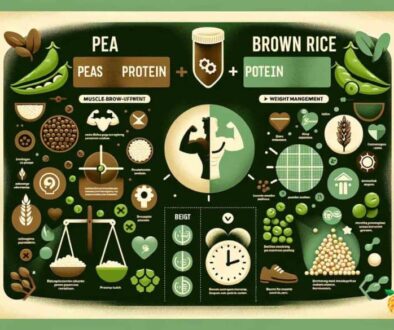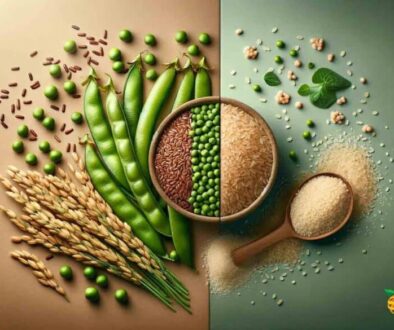Hydrolyzed Pea Protein: Revolutionizing the Food and Beverage Industry
Explore hydrolyzed pea protein: versatile in food and beverage industry, ideal for sustainable, nutritious, plant-based dietary choices.
The food and beverage industry is witnessing a paradigm shift with the rise of hydrolyzed pea protein. This versatile ingredient is transforming how products are formulated, catering to the growing demand for plant-based and health-conscious options.
What is Hydrolyzed Pea Protein?
Derived from yellow peas, hydrolyzed pea protein undergoes a process that breaks down the protein into smaller peptides, enhancing its digestibility and absorption. This form of protein is gaining popularity for its nutritional profile and functional properties.
Nutritional Profile
Hydrolyzed pea protein is a complete protein, containing all nine essential amino acids. It’s rich in BCAAs, vital for muscle growth and recovery, and is also hypoallergenic, making it suitable for a wider audience.
Applications in the Food and Beverage Industry
- Plant-Based Meat Alternatives: Hydrolyzed pea protein is a key ingredient in vegan and vegetarian meat substitutes, offering a texture and protein content similar to that of meat.
- Dairy Alternatives: It’s used in dairy-free products like milk, yogurt, and cheese, providing a creamy texture and nutritional value.
- Protein Bars and Snacks: Due to its high protein content and neutral taste, it’s ideal for protein bars, snacks, and cereals, catering to the health-conscious consumer.
- Beverages: Hydrolyzed pea protein is found in protein shakes and plant-based beverages, offering a nutritious, lactose-free alternative to traditional protein sources.
- Bakery Products: Its binding properties make it suitable for gluten-free and high-protein baked goods, maintaining texture and adding nutritional value.
- Confectionery: It’s being incorporated into sweets and desserts, providing a healthier, protein-rich option.
Sustainability
Hydrolyzed pea protein is not only beneficial for health but also for the environment. Pea cultivation requires less water and land compared to animal-based proteins, reducing the carbon footprint.
Conclusion
The versatility and nutritional benefits of hydrolyzed pea protein make it a valuable ingredient in the food and beverage industry. It meets the growing demand for sustainable, plant-based, and allergen-free products.
Summary and Recommendation
As the food and beverage industry continues to innovate, hydrolyzed pea protein stands out for its health and environmental benefits. ETprotein’s hydrolyzed pea protein is an excellent choice for those looking to incorporate a sustainable, nutritious, and versatile protein into their products.












